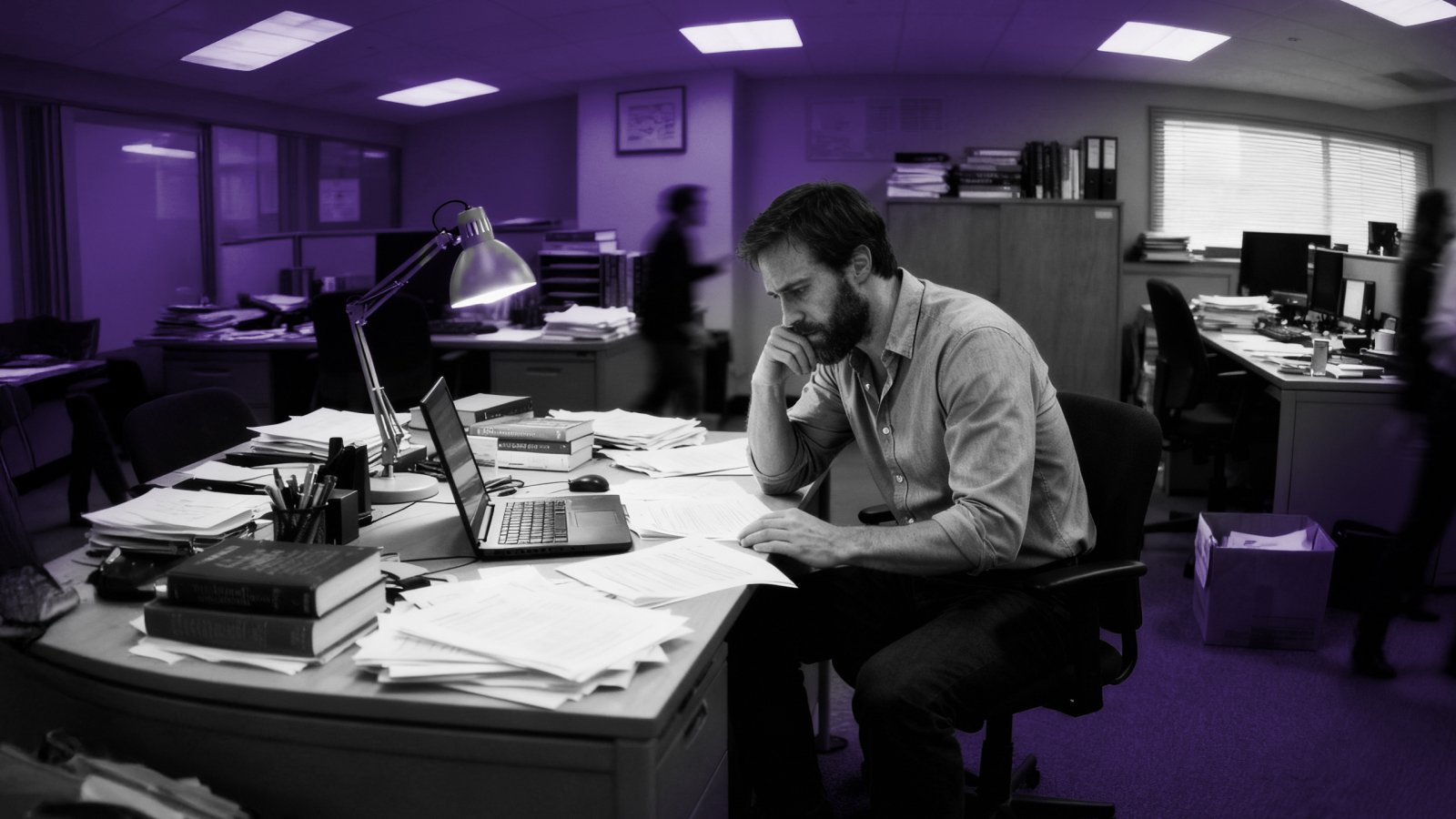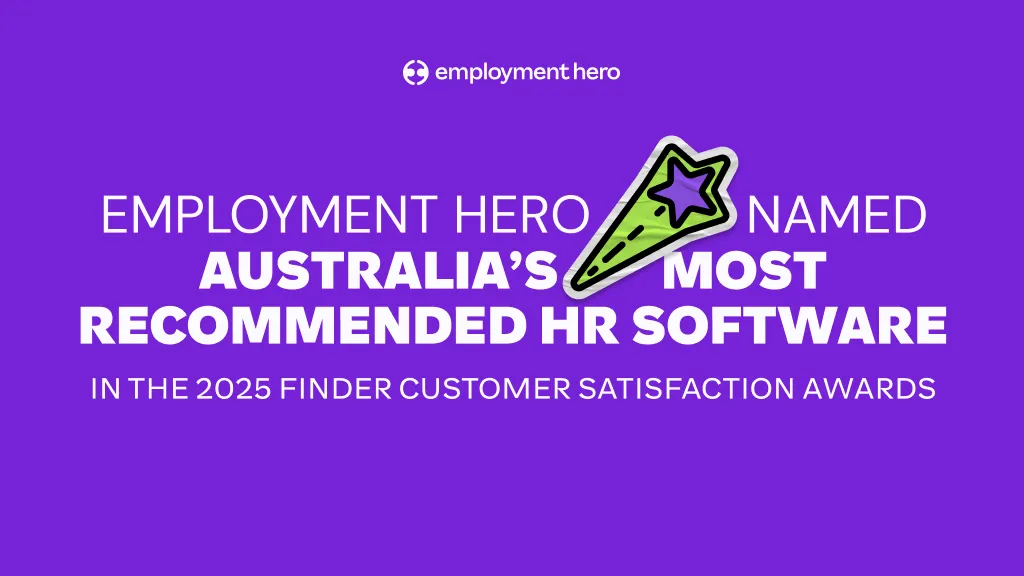Burnout is quietly reshaping the Australian workforce, with a new report suggesting that millions are ready to walk.
Almost three million workers are considering leaving their roles because of mental distress, according to new research from Allianz Australia, with six in ten employees saying they’ve experienced burnout symptoms in the past year.
The Unschedule the Burnout report, which included research across seven years, paints a sad picture of the nation’s mental state. Brianna Cattanach, National Manager, Mental Health Strategy and Delivery at Allianz, says what’s surprising isn’t that burnout is increasing but how it’s morphing.
“The experiences contributing to burnout are broadening. We’re seeing this really complex scenario where we have more stress at work and more stress in our personal lives, coming together to make people feel really stretched, really exhausted.”
When the best performers burn out first
One of the most telling findings of Allianz’s research is how burnout hits for high performers. “It tends to impact our highest performers the most because they are the ones that are most likely to have role creep,” Cattanach says.
“They say yes to things. They’re dependable and capable, so we give them extra new tasks. They end up sitting across a real breadth of work much bigger than their role was initially designed to be.” And yet, as Cattanach points out, the fix is free.
“Role clarity is such a quick, easy win. There’s no cost to improve it.” Clarity, she says, prevents talented people from burning cognitive energy and feelings of resentment. “A lot of people are really unclear of what the expectations are of them, what good performance looks like,” says Cattanach.
“They then end up over-spending emotional and cognitive energy worrying, am I performing well enough? Am I prioritising the right way? Is this something I’m meant to be doing? It takes away from their ability just to be productive.”
The cult of “always on”
Cattanach says the other major driver of burnout is a culture that rewards visibility over value. “Our research found that, on average, Australian workers are spending about three hours a day on unnecessary meetings or unnecessary tasks,” she says.
“There’s a permission-giving piece that needs to happen around allowing workers to decline meetings where they don’t feel they’re going to add value. At the moment, particularly with hybrid work, people feel like they have to prove that they’re effective by being visible.”
At Allianz, they’ve adopted small rituals to combat ‘always on’ fatigue. “We start all our meetings at five past the hour,” she says. “That way, if you have back-to-backs, you’re guaranteed a five-minute break.” Some teams also run Workflow Wednesdays, where no meetings are scheduled at all, or have set hours when emails can be sent. “It’s simple things like that that help break the ‘always on’ experience.”
She’s also a big believer in physical boundaries. “I really encourage people to have two separate phones,” she says. “Even outside of work, our phones are still pinging with emails and notifications. Part of the reason we feel like we are always on is because we are.”
Cattanach says that while Australia’s right-to-disconnect laws are a step in the right direction, true change will come when workplaces stop mistaking busyness for effectiveness. “We really need to challenge this perception that always being busy is what makes for a good worker. Because actually, that’s what’s going to make for a burnt-out worker.”
Spending big, but what are the results?
Australia is expected to spend nearly $40 billion on mental health support services this year, yet compensation claims for psychological injury are up 28 per cent in the past five years. “We’re just not seeing the benefit of that significant spend,” Cattanach says. “I have seen good money spent after bad on initiatives that just haven’t hit the mark for the workforce.”
The programs that do move the dial tend to be targeted, contextual and built around proven benefits. For example, companies such as Unyoked have partnered with employers to prescribe deliberate recovery, giving teams structured access to nature through short off-grid breaks near major cities across Australia, New Zealand and the UK. The model has been embraced by businesses looking for practical, science-backed interventions that improve mental clarity and reduce stress, rather than relying on one-size-fits-all perks.
Too often, she says, companies roll out generic wellness programs that don’t speak to their employees’ specific needs. “It comes off feeling a bit tokenistic. There’s a lack of trust because you haven’t done the work to create a program that speaks to your workforce,” she says.
“My main recommendation for small businesses is to get some champions involved that are from your frontline workforce and have them be the ones that help shape and promote these programs. People are typically more likely to invest in these sorts of things if their colleague is telling them they think it’s a good idea, versus it coming from the top down.”
She also encourages employers to start with what’s already within their control structurally. “The first step to supporting mental health is actually just continuing to grow and improve your operations,” she says. “How can you eliminate unnecessary tasks or workflows that cause frustration? What can you do to improve customer experience, so your people have fewer negative interactions?”
She also believes in making recovery part of the work rhythm. “About a third of employees say they would really appreciate a routine of mental health days embedded in their organisation. I’ve also seen workplaces do ‘Sunshine Fridays,’ where everyone knocks off a couple of hours early to focus on themselves. There are so many low cost ways to give people a bit of recovery time.”
The SME burnout bind
While large corporations can afford wellbeing budgets and structural experiments, small and medium businesses face a tougher equation. Allianz’s SME-specific data, shared exclusively with Employment Hero, found that small businesses are more flexible and close-knit, but less likely to have formal mental health frameworks.
“The biggest strain on small businesses is that they’re always doing more with less,” says Cattanach. “It’s an amazing experience because you get to be agile, but it can make people more predisposed to burnout because there’s a culture of ‘we’ll just dig in.”
She recommends small businesses use their networks to share resources. “It’s hard to do things like leadership training as an individual business of 12 people,” she says. “But if you have a few connected businesses of similar size, it becomes much more affordable.” That “community of practice,” she says, “starts to align small businesses with the best practice we recommend in larger workplaces. Suddenly your 20-person business becomes a 100-person business with shared resources.”
The future of work (and rest)
As technology removes repetitive admin and automates low-value tasks, Cattanach offers both a warning and a wish. “There’s so much opportunity with tech,” she says. “But what does it mean when we take away all the easy work? Will we end up asking people to do consistently cognitively and emotionally demanding work? If you don’t reinvest some of that saved time into recovery, you’ll probably still see higher rates of burnout.”
Ultimately, Cattanach’s vision for the future of work is simple. “I’d love to see workplaces think more critically about how their people are working, what they’re asking them to do and get more definition around that. What can you do that actually walks the talk?
The symptoms of burnout and what leaders should watch for
Early intervention matters. These signs are not character flaws or attitude problems, they’re distress signals.
- Sudden drop in performance or motivation from a previously reliable employee
This shift often signals exhaustion or frustration rather than a loss of skill or commitment. A high-achiever who once took pride in their work may struggle to focus, procrastinate, or express apathy toward goals. - Noticeable withdrawal from team interaction or silence in meetings
An engaged employee going quiet can indicate they’re overwhelmed, feeling unheard, or emotionally drained. Isolation is often a form of self-protection when workload or stress feels unmanageable. - Increasing errors, missed deadlines or slow decision-making
Cognitive fatigue impacts attention, memory, and problem-solving. When people who normally excel in their role start making avoidable mistakes or seem indecisive, it’s often a signal they’re running on empty. - Emotional changes such as irritability, cynicism or detachment
Burnout can distort a person’s outlook. Irritability may replace collaboration, cynicism may replace optimism, and motivation can fade into emotional numbness - Visible fatigue, frequent sick days or escalating minor health complaints
Chronic stress manifests physically, with persistent tiredness, headaches, and a weakened immune system often accompany burnout. Repeated absences might not stem from disengagement but from the body demanding rest. - Statements like “I just can’t keep up”, “I don’t care anymore”, or “What’s the point?”
These verbal cues suggest hopelessness or emotional exhaustion. Rather than dismissing them as negativity, leaders should treat such remarks as invitations to discuss workload, resources, and well-being.


























